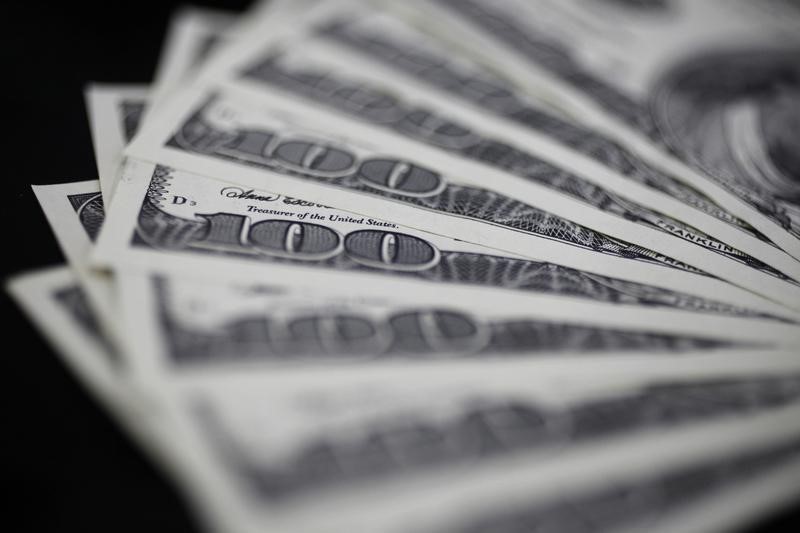NHL signs licensing deals with prediction-market startups Kalshi and Polymarket - WSJ
Investing.com - The U.S. dollar edged lower Friday, consolidating after the previous session’s sharp gains ahead of the release of the Federal Reserve’s preferred gauge of inflation.
At 03:00 ET (08:00 GMT), the Dollar Index, which tracks the greenback against a basket of six other currencies, traded 0.1% lower to 98.090, after posting a 0.6% gain in the prior session.
The index is on course for a 0.8% gain this week, the biggest increase since the week ending August 1.
PCE data due
The dollar jumped higher Thursday as the release of stronger than expected U.S. economic data reinforced the view that the world’s largest economy remains healthy despite higher borrowing costs, curbing market bets on aggressive Fed easing in the months ahead.
The Commerce Department revised U.S. second-quarter GDP growth up to an annualised 3.8% from a previous estimate of 3.3%, citing resilient consumer spending and a narrower trade deficit.
Additionally, the weekly initial jobless claims recorded a second consecutive drop, to 218,000 from 232,000, well below the 227,000 one-year moving average.
“The dollar hadn’t had such a slew of good data in a while, and positioning squeezes likely helped the move,” said analysts at ING, in a note. “But we think more good news is needed to keep the dollar going, and we see substantial risks of a correction today after a USD rally that looks slightly overdone.”
Investors are now awaiting the release of the Fed’s preferred inflation measure, the personal consumption expenditures price index, for clearer signals on the policy path.
“We expect 0.2% MoM, in line with expectations. That could be enough to bring the pricing for December Fed easing back into the 40-45bp area (now 39bp),” said ING.
Euro in tight range
In Europe, EUR/USD traded 0.1% higher to 1.1673, trading in a tight range.
“Our baseline view is for the dollar to give back some gains, and we think a return above 1.170 can happen as early as today,” said ING.
Traders are also having to digest U.S. President Donald Trump’s announcement of a broad range of new import duties, including 100% on branded drugs, 25% on heavy-duty trucks, and 50% on kitchen cabinets.
GBP/USD traded largely unchanged at 1.3348, while USD/CHF was also flat at 0.7999 after the Swiss National Bank held its key interest rate at zero on Thursday, as widely expected.
The decision marks the first hold in seven meetings by the SNB, after it started reducing borrowing costs in March 2024.
Core Japanese CPI eases
Elsewhere, USD/JPY slipped marginally to 149.83, but was set for a weekly gain of over 1%, after Tokyo consumer inflation data showed headline CPI rising 2.5% year-on-year in September, unchanged from August, while the core measure excluding fresh food and energy eased to 2.5% from 3.0%.
The softer underlying reading supported expectations that the BOJ will move cautiously on further rate hikes, underlining its preference for gradual policy normalisation.
USD/CNY traded largely unchanged at 7.1345, while AUD/USD dropped 0.1% to 0.6531, on course for a weekly loss of nearly 1%.
